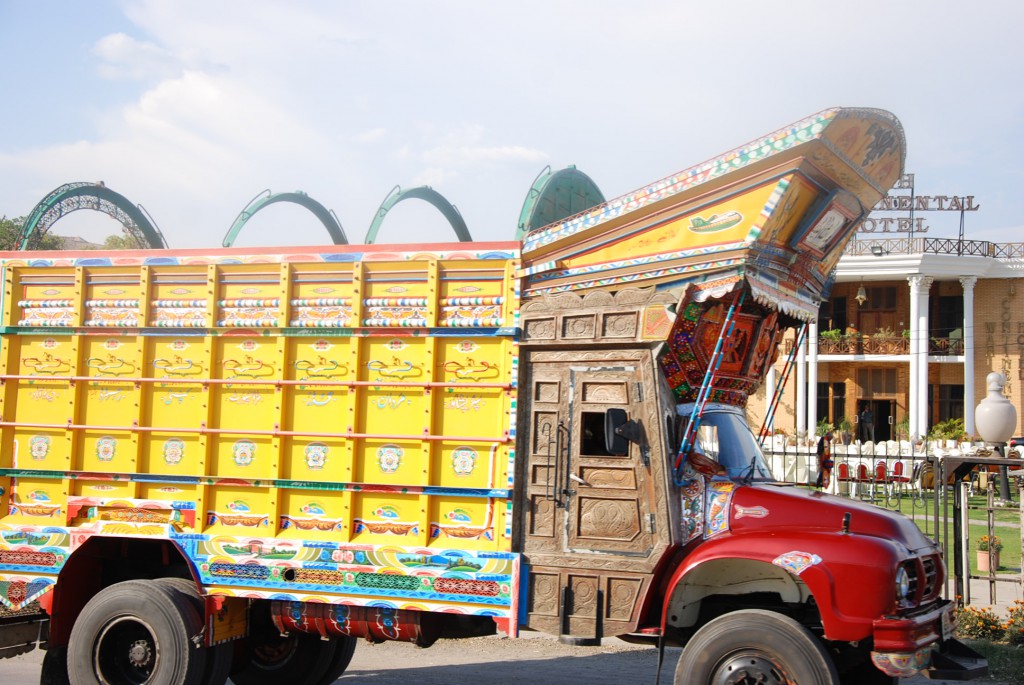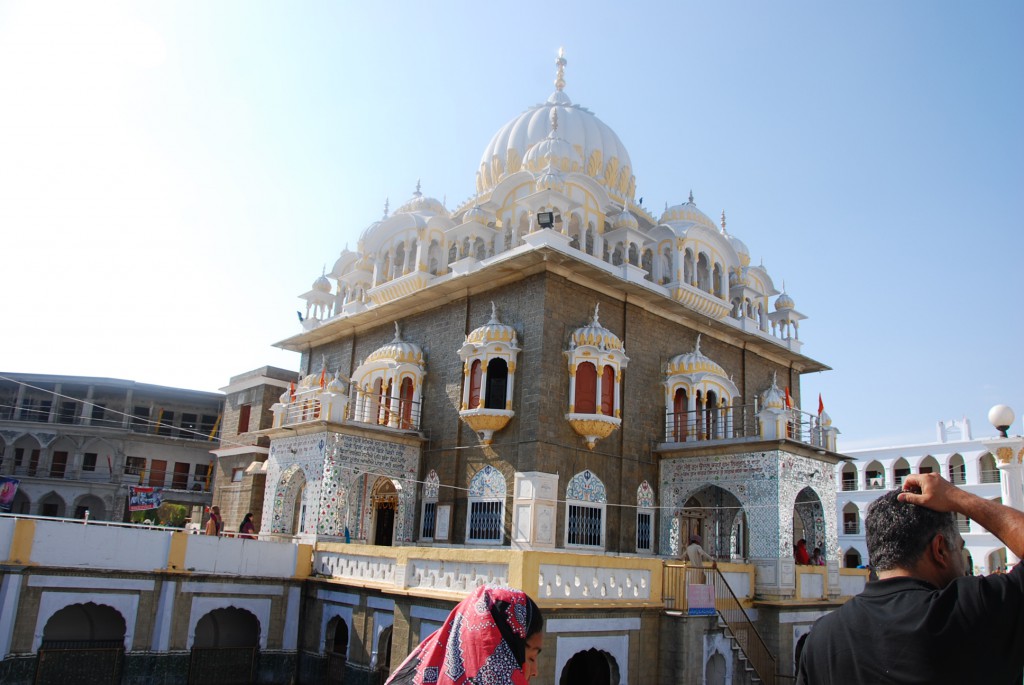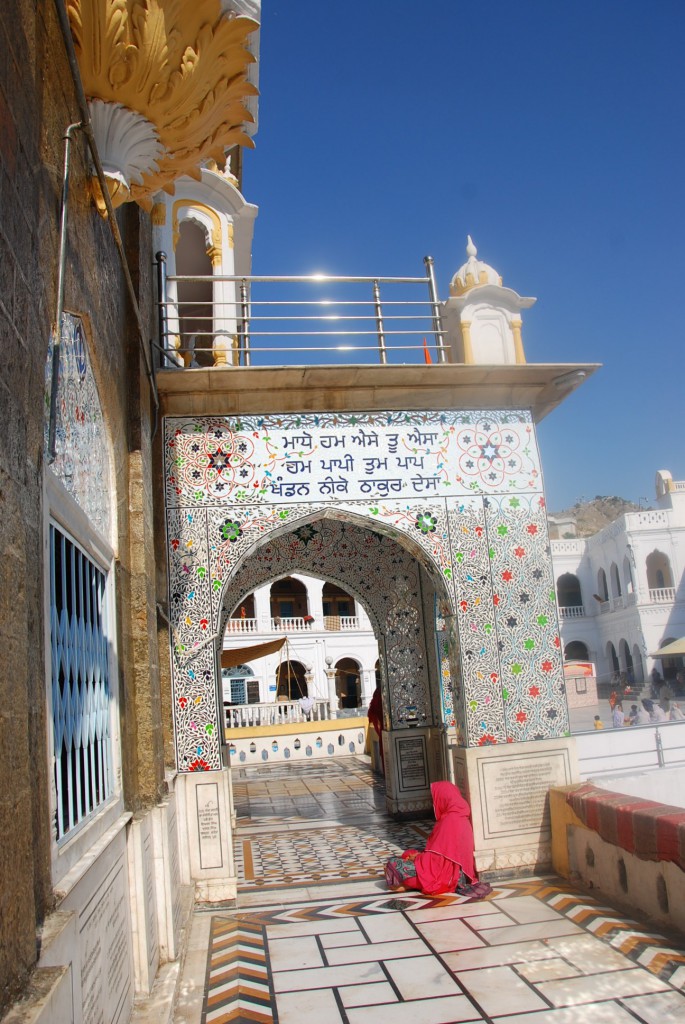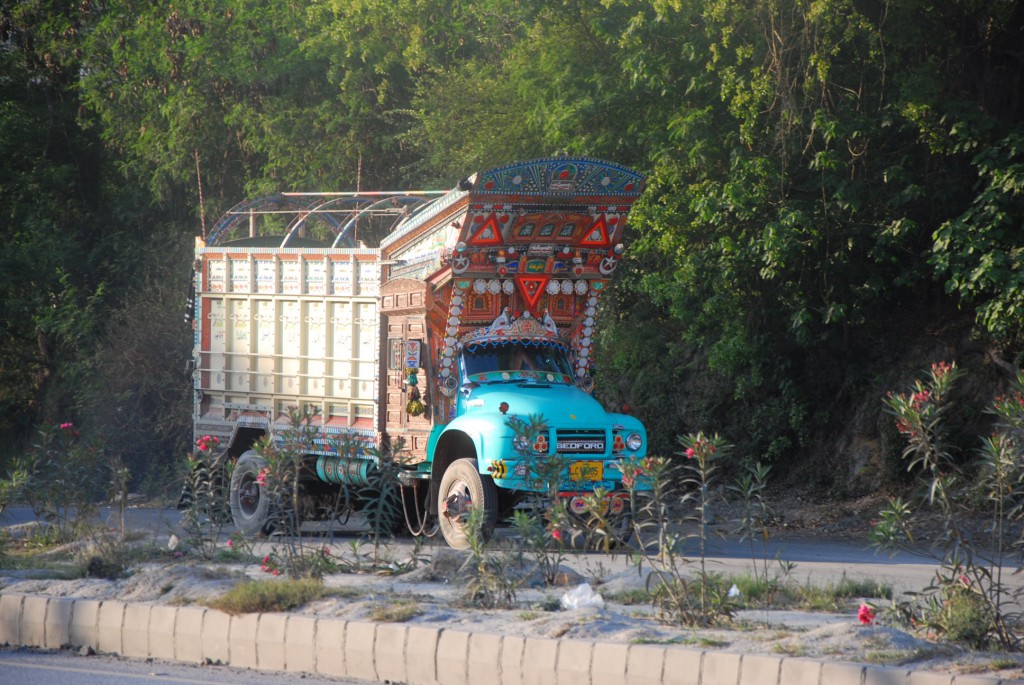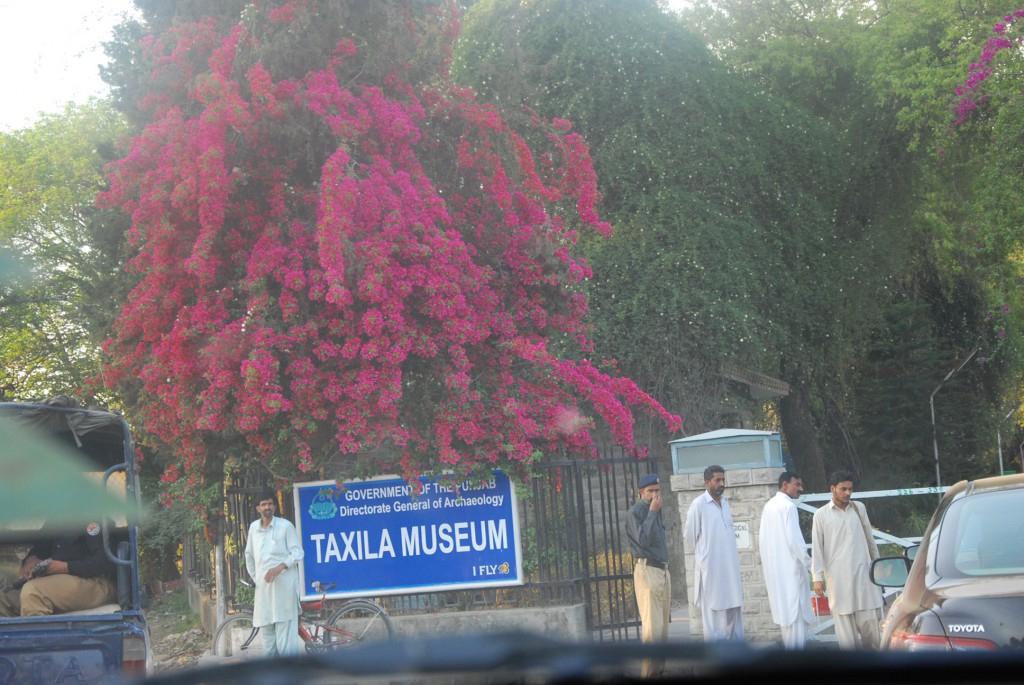I was thrilled when my husband informed me that there had been a request from the Pakistani embassy for copies of the book ‘Sufi Saint of Ajmer’ for a delegation from Pakistan! I had written the book several years ago and had preserved a few copies. Never having visited Pakistan before I was a little hesitant. Friends had told me “ they are just like us” and the phrase stayed in my mind whilst my heart told me “we are all one “ !
Islamabad was beautiful, open roads and wonderful monuments. Islamabad felt a little like Chandigarh – beautifully laid out in sectors and yet the terrain and people reminded me of Tajikistan and central Asia more than any Indian city! Dinner at the Monal restaurant on the hilltop gave us a commanding view of Islambad. A chilly breeze was soon neutralized by the sumptuous barbeque and live ghazal performance .
The next day I was delighted to have the privilege to visit the magnificent sprawling Faisal mosque with a background of green rolling hills and a light drizzle. Shopping for ‘Punjabi suits’ material made from the famous “lawn” a texturized voile cotton with trendy prints, everyone from India had asked me for one! Shopping included buying framed Tabriz tapestry portraits and other local handicraft.
Once there, close Pakistani friends, wanted to know how my expectations differed from what I had actually encountered in the few hours that I was there. Several years ago I had read the autobiography of Tehmina Durrani, a Pakistani English authoress titled My Feudal Lord who described her traumatic marital life with Gulam Mustafa Khar, an important politician in the Zulfiqar Ali Bhutto’s government, who later became the Chief Minister of Punjab. The book described instances where ‘patriarchs’ dominated the household , and women were considered ‘inferior’ both intellectually and socially. I was therefore really happy to meet people like my friend Ahmareen Allauddin who was a University professor and had just enrolled for a M Phil program and still did a wonderful task of bringing up her very bright sons and being an excellent hostess! I was told that the book I had mentioned was the exception rather than the rule !
My husband’s maternal grandfather Sardar Sant Singh Seble had lived in Rawalpindi before 1947 when the partition of India and Pakistan took place . We visited his home. I was told that once it was a huge rambling haveli of 22 rooms and had outhouses for numerous servants, horses and livestock. It had been converted into the ‘FG High school for girls’ a few years ago and was a huge neatly white washed well maintained building. Apparently he had owned 27 cinemas before partition and a huge summer chalet in the nearby picturesque hill station Murree. This visit to Rawalpindi had given us a chance to pay homage to our very loved ‘Daddy-ji’ by visiting his home. Daddy-ji had been a powerful and enigmatic personality and like thousands of other Punjabis had to restart life in New Delhi as a refugee !
Coincidentally the day we reached Pakistan was the Baisakhi festival and this we considered as a very auspicious day to visit Gurdwara ‘Panja Sahib’ situated at Hasan Abdal, 48 kilometres from Rawalpindi. A holy Sikh shrine named after the imprint of Shri Guru Nanak jis palm on a rock . Legend has it that Shri Guru Nanak Dev ji along with Bhai Mardana reached Hasan Abdal on Baisakhi in the 15th century . Under a shady cool tree, Guru Nanak and Bhai Mardana started reciting Kirtan with their devotees gathered around. This annoyed a local saint, Hazrat Shah Wali Qandhari, meditating atop a nearby hill. Bhai Mardana was sent thrice to Shah Wali Qandhari by (Guru Nanak) to request him for drinking water . The irate Wali remarked : “Why don’t you ask your Master whom you serve?”
Mardana went back to the Guru in a miserable state and said “Oh lord! I prefer death to thirst but will not approach Wali the egoist.” The Guru replied “Oh Bhai Mardana! Repeat the Name of God, the Almighty; and drink the water to your heart’s content.” The Guru pushed a big rock lying nearby and a flowing fountain of pure water sprang up flowing endlessly quenching everyones thirst. The legend further describes that the water source of Shah Wali Qandhari dried up and he angrily hurled a rock towards the Guru from the top of the hill. The Guru stopped the rock with his hand , the impact leaving the imprint of his palm on the rock. Observing the miracle, Wali became the Guru’s devotee. This holy and revered place was named ‘Panja’ Sahib by Hari Singh Nalwa, the most famous Sikh General who is credited with having built the gurdwara.
Travelling from Islamabad to Rawalpindi and then to Hasan Abdal we decided to visit the Taxila excavations. I was amazed by the colourful trucks on the highway. Inspite of their huge size and noxious fumes they emitted, the trucks absolutely transformed the landscape by bringing colour and variety. Each truck was more spectacular than the next, painted with vibrant motifs of birds, fish and animals, huge colourful flowers, scenes from village life. Most trucks had a religious symbol of the Ka’aba appearing on the left and right of the front of the truck somewhere towards the top. Apparently ‘Truck Art’ was a legacy from the days of the British Raj when bus companies decided to decorate their vehicles to attract more customers. Decorating and painting the intricate designs must be expensive but was truly in sync with the Punjabi personality – big hearted, colourful and vibrant. A psychedelic ‘home away from home’ for the nomadic truck driver who would obviously identify with it and take pride in his multicolour palace on the highway, an expression of his very own personality !
Just off the Grand Trunk road we finally reached Taxila an important archaeological site. The excavated ruins date back to the Gandhara period and contains the ruins of the Gandhāran city of Takṣaśilā which was an important Hindu and Buddhist religious and historical centre. In 1980, Taxila was declared a UNESCO World Heritage Site with multiple excavations at various locations. Excavation activity started here between the years 1913 and 1934 by Sir John Marshall, the then Director General of Archeeological Survey of British India who unearthed the remains of early settlement sites belonging to Neolithic, Early-Harappan and Gandharan Grave Culture periods. We were able to only visit the Sirkap mound which showed a city laid out with Buddhist Stupas, Jain statues and Greek sculptures dating from the invasion of “Alexander the great” . Laid out systematically on either side of a ‘main road’ we were told that the ruins were excavated from several layers below the ground . It was interesting to hear the guide show us Jain ruins and call them the belonging to the “Vegetarian God” ! I realized that there must be very few Jains in Islamabad and was amused how the local guide associated the religion by its vegetarian aspect ! Most of the interesting excavated statues were kept in the nearby museum which had shut for the day.
We witnessed the radiant orange sky with the setting sun which brought darkness to the ancient excavations at the Sirkap ruins, a truly spectacular scene and reminded me of my favourite Beatle tune ‘all things must pass’ !

